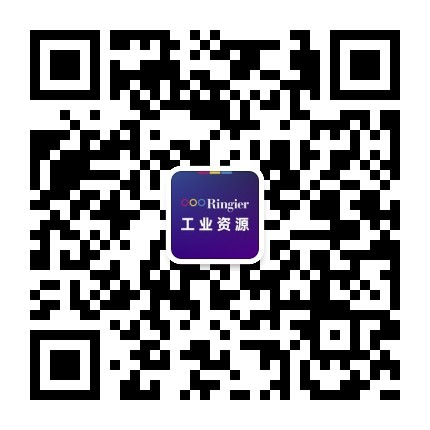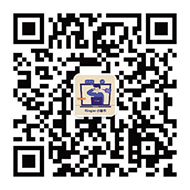In late 2022, as part of its global ‘World Without Waste’ initiative, The Coca Cola Company announced its intentions to have at least 25% of all its beverages across its portfolio of brands be sold in refillable or returnable bottles by 2030. Coca-Cola Latin America has set an even more ambitious goal by targeting 40% returnable or refillable bottles by 2030. The company is on track to succeed. In 2023, returnable glass bottles and refillable polyethylene terephthalate (PET) bottles already represented more than 50% of sales in more than 20 markets, and more than 25% of sales in another 20 markets.
These impressive results are made possible by the group’s expanding use of a “Universal Bottle”—a bottle of a standardised colour, size and shape used across a wide range of brands. This concept was first introduced in 2018 by Coca Cola Brazil and is now used in Argentina, Bolivia, Brazil, Chile, Colombia, Costa Rica, Ecuador, Guatemala, Mexico, Nicaragua, Panama, Paraguay, Peru and Uruguay. It’s a simple and yet very innovative solution that makes it easier and more efficient to collect, clean and refill bottles. The RefPET bottles are designed to last for up to 25 filling cycles, after which they are recycled into new PET resin to become new packaging for food and beverages.

QR codes for traceability
To determine whether a bottle returned by a consumer should be refilled or whether it should be recycled, Coca- Cola needed a way to know how many times a bottle had been through the refill cycle. And that’s where GS1 Brazil came in. GS1 is a neutral, not-for-profit organisation that develops and maintains the most widely used global standards for efficient business communication. GS1 empowers industry’s digital transformation by enabling businesses to create a digital version of a product that is as good as the physical one. Ultimately, consumers and patients will benefit from increased product transparency and the seamless experiences that this brings. GS1 standards improve the efficiency, safety and visibility of supply chains across physical and digital channels in 25 sectors. Its scale and reach—local Member Organisations in more than 110 countries, 2 million user companies and 6 billion transactions every day—help ensure that GS1 standards create a common language that supports systems and processes across the globe. GS1-enabled traceability solutions provide the best path to interoperability, protect companies' investments and scale up. Greater levels of digitalisation, speed and data accuracy become possible. Each trading partner in the chain becomes free to choose the solution on the market that best meets its specific needs.
Each Coca-Cola RefFIT refillable bottle intended for the Chilean market needed a unique identifier that could be updated with the latest information about that bottle’s number of return/refill cycles. QR Codes powered by GS1 were the perfect solution. This two-dimensional barcode can contain more information than the traditional barcode. In this case, the QR Codes held GS1 Global Returnable Asset Identifiers (GRAI) as well as a GS1 Digital Link. In the same way that a URL points to one website, a GS1 Digital Link connects to various sources of online information.
Companies use QR Codes with a GS1 Digital Link to deliver information to shoppers and consumers about ingredients, allergens, recipes, rewards, promotions and more, as well as to provide brand-authorised details about where the item was manufactured, facts about sourcing, easy ways to re-order and other details. QR Codes with a GS1 Digital Link also help improve business operations by allowing business partners to boost transparency, improve inventory management, reduce waste, simplify recall and return processes … and also enable traceability and sustainability initiatives just like Coca-Cola’s RefPET!

GS1 GRAIs tell each bottle’s life story
The GS1 GRAI was designed to help manage reusable transport items, transport equipment and tools. When also encoded with an item-by-item serial number, as Coca-Colas does, GS1 GRAIs allow companies to track and trace the movement of items. So, thanks to the QR Codes with GS1 Digital Link engraved on each individual bottle, Coca-Cola and its bottling partners are able to see each bottle’s complete return and refill history.
Scanning a bottle’s QR Code takes one to the RetornApp website, created as part of a project focused on digitising the refilling operation in Chile. A dashboard was developed to support the operation. The dashboard shows the GS1 GRAI and serial number of each bottle, and also provides details on when and where the bottle was first produced and filled, how many times it has been returned, when and where it was refilled, how long each cycle lasts in days, and other details. Beyond the positive sustainability impact, all that information about each bottle’s journeys through the market is incredibly useful and valuable for sales, marketing and production purposes.
The entire initiative depended on finding the right technology to get a QR Code with GS1 Digital Link directly onto every plastic bottle, as well as to detect and read them during the filling process. These codes cannot be printed on the labels, because labels change with each refill cycle. The properly durable and readable solution came from Wipotec, a leading global provider of unique machine solutions and technologies headquartered in Germany.
OPTEL, a leading Canadian company in the traceability industry, provided the reading technology, as well as the cloud-based solution for generating the serial numbers, storing the data and updating the dashboard. OPTEL has a proven track record of 35 years in providing end-to-end traceability solutions that enable companies to unlock the potential of intelligent and digital supply chains. Optchain, OPTEL’s flagship traceability solution, connects all stakeholders across the value chain to ensure complete, real-time visibility for better supply chain performance, carbon footprint tracking, and compliance with regulatory standards.
Teams at Wipotec worked relentlessly to find a laser engraving solution that could be done on the bottle manufacturing line, that would work on refillable PET bottles and that would remain scannable through several washing and refilling cycles. And they did it: in fact, the results were even better than the original specifications. Wipotec leaders have publicly expressed their great pride in this solution, as it is an excellent example of their expertise in technology, their commitment to innovation and their belief in sustainable actions. The Wipotec Group is a leading global provider of intelligent weighing and inspection technology. Driven by corporate philosophy “Innovation. Passion. First.”, it develops and produces unique machine solutions and technologies for OEMs and end users in a wide range of industries.
Coca-Cola teams in Latin America know they need to increase the quantity of this sort of bottle in circulation in order to achieve properly actionable insights. They expect to be able to make better decisions in planning, logistics and industrial operations, and even to test new service models.
There are several scenarios for future consideration. These include accurate asset control to enhance CAPEX productivity, returnability based on the number of cycles per year, and retrievability by tracking the number of bottles returned from the market. Coca Cola teams will also focus on durability by assessing package performance and establishing a dedicated collection ecosystem.
The QR Codes with GS1 Digital Link could also be used to provide new services for consumers, such as ways to check authenticity, access to product information, details about their bottle’s unique journey and the measurably positive environmental impacts of choosing returnable products.

 iConnectHub
iConnectHub
 Login/Register
Login/Register Supplier Login
Supplier Login


























